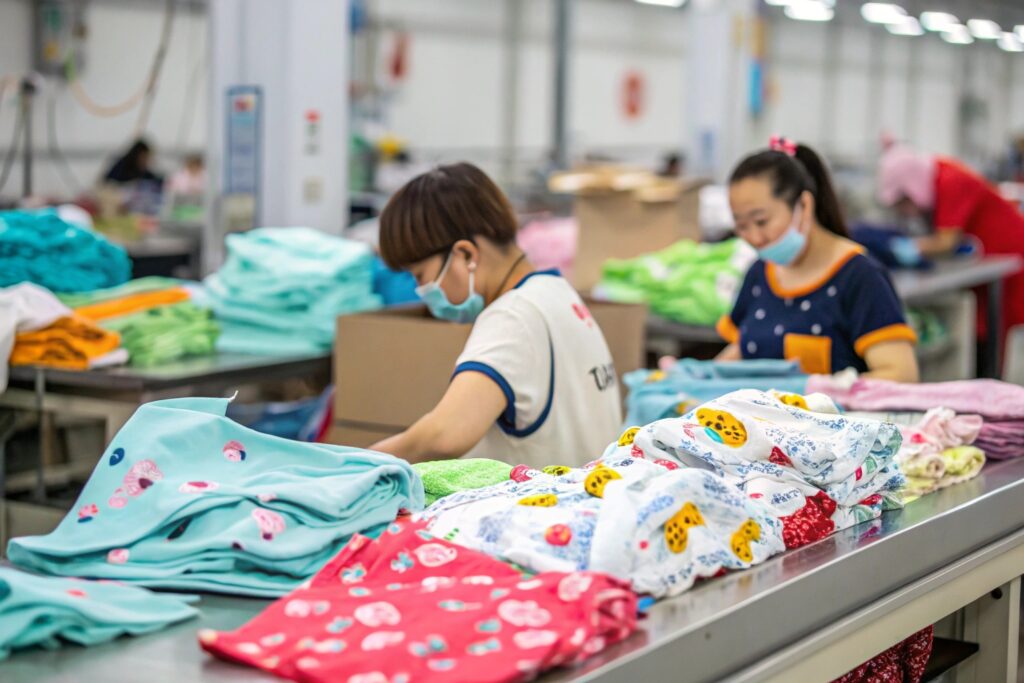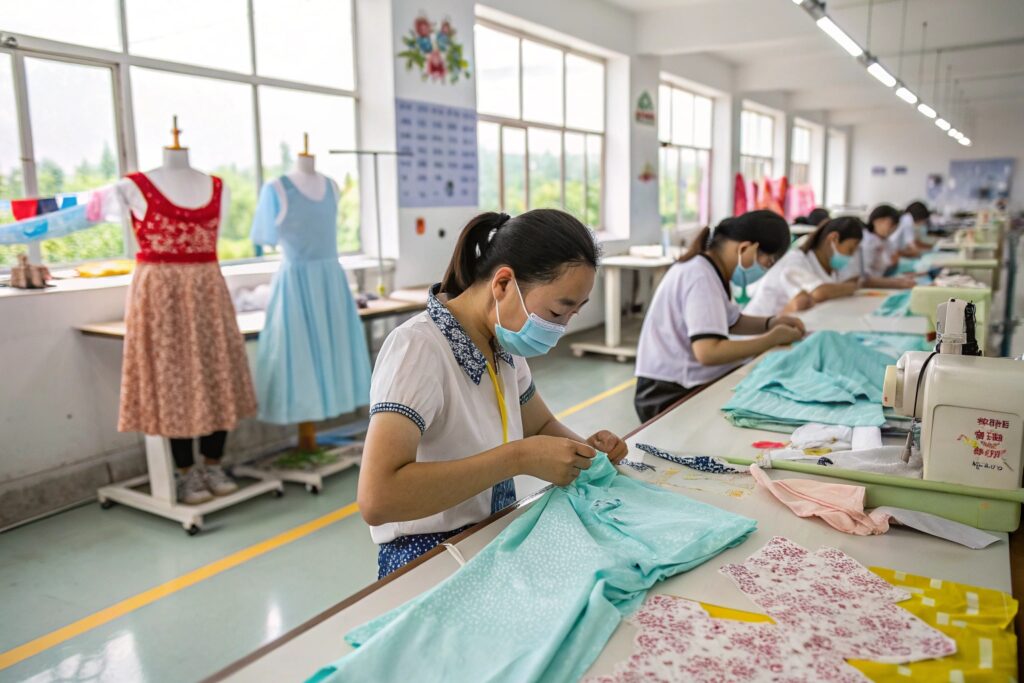In the kidswear industry, missing a season can mean missing an entire product cycle—and thousands in revenue. As fast fashion invades every market segment, the need for speed has never been more pressing.
Speed in kidswear capsule manufacturing is more than just a logistical perk—it’s a competitive advantage. Brands that move faster not only capture trends early but also respond to market demand more accurately.
If you’re in the children’s apparel business, you’ve likely felt the pressure to deliver faster. But knowing how and why speed works in your favor is what separates successful buyers from the rest.
Fast Fashion Trends in Kidswear: What Buyers Must Know?
As the kidswear market leans into seasonal refreshes, slow production could leave your inventory outdated before it even hits the shelves.
Fast fashion trends have hit kidswear hard—brands that respond quickly to new styles often outpace their competitors and dominate the market.

Why has the demand for quick trend adoption skyrocketed in the children’s clothing sector, even more than in adult fashion?
Retailers in the kidswear sector are noticing a significant change: children’s fashion now mirrors adult fashion cycles. Trends that used to evolve over seasons now emerge and vanish within months. Parents want their kids to look modern, stylish, and social-media-ready. But if your suppliers can’t respond quickly, you’ll miss those micro-seasons that make or break your quarterly revenue.
Children’s capsule collections—those limited seasonal drops—depend on current colors, motifs, and silhouettes. In the U.S., for example, a unicorn-print dress may trend wildly for two months before it’s replaced by a butterfly theme. If you’re not producing quickly, you’re left with unsellable inventory. In my experience, many brands underestimate how unforgiving the kidswear market can be in terms of trend responsiveness.
What risks do buyers face if they rely on slow-turnaround suppliers who don’t align with rapid design cycles?
One major risk is overstock. A supplier taking 90+ days to deliver can lead to off-trend inventory arriving too late. That means heavy discounting, which eats into profit margins. Worse, your brand might gain a reputation for “old styles,” which affects long-term customer loyalty.
Another issue is missed growth opportunities. During back-to-school or holiday periods, timely capsule launches can skyrocket your sales. But if your manufacturer lags, you miss the window. I’ve spoken with several American clients who’ve pulled out of partnerships simply because production timelines couldn’t keep up with the market.
How Quick Turnaround Times Boost Retail Success?
Slow production timelines kill momentum. In kidswear, the sooner you launch, the sooner you earn.
Quick turnaround times in kidswear allow brands to align better with customer demand, cut inventory risks, and maximize profit during critical sales windows.

How do short lead times help kidswear buyers reduce stock risk and improve sell-through rates?
Short lead times mean you’re closer to market data when placing orders. For example, say a striped boy’s T-shirt style suddenly becomes a trend in April. If your production partner can deliver in 20 days, you’re on shelves by May. A slower factory? You’re selling in July—after the hype dies down.
This control over timing helps you sell more at full price. I’ve seen customers increase sell-through rates by 30% simply by shifting from 75-day cycles to 30-day ones. That’s because the closer you are to the trend, the easier it is to sell without markdowns.
Fumao Clothing’s 5-line factory in China has allowed many of our North American clients to shift to monthly capsule releases. By using custom DDP shipments and handling every detail from pattern to packaging, we take the friction out of fast.
What types of buyers benefit most from faster garment manufacturing—and why?
Buyers focused on DTC (direct-to-consumer) sales benefit the most. Their margin structures rely on full-price sales, and they need flexibility. But even wholesale distributors and chain stores need speed. The faster they receive goods, the sooner they can launch campaigns or replenish bestsellers.
In many cases, smaller brands benefit disproportionately. Why? Because they often test trends with lower MOQs. A faster factory lets them run short batches, test them, and reorder quickly. Our customers often use us as a test-bed: run 300 pieces, sell out, and place a reorder before the next wave of demand hits.
Speed-to-Market Strategies for Children’s Clothing Lines?
Speed doesn’t just happen—it’s engineered. You need systems, partners, and discipline to build a fast kidswear supply chain.
To launch faster, successful kidswear brands focus on supplier communication, pre-approved fabric inventories, and simplified approval processes.

What systems must buyers implement to work effectively with fast-moving garment factories?
To achieve true speed-to-market, buyers need to rethink how they communicate. Don’t wait days between email approvals. Set up real-time tools—WhatsApp, Slack, Zoom—so changes can be confirmed in hours, not days. Use tech packs that are clear and precise, and create a sample approval SOP that your factory understands.
Many of our clients now use rolling forecasts instead of rigid annual plans. They share trend forecasts monthly, and we pre-source compatible fabrics. This system gives them the flexibility to launch new SKUs without starting from scratch every time.
Here’s a simplified workflow table we recommend:
| Step | Action | Time Saved |
|---|---|---|
| 1 | Pre-approve core fabrics | 5-10 days |
| 2 | Use modular patterns | 7 days |
| 3 | Streamline sample approvals | 3-5 days |
| 4 | Use DDP freight | 4-7 days |
What are the top three causes of delays in kidswear production—and how can buyers avoid them?
- Slow design finalization – Fix this by preparing multiple mood boards and choosing styles ahead of trend waves.
- Late fabric confirmation – Fix this by working with factories that offer in-stock materials or fast sourcing teams.
- Unclear sampling feedback – Fix this by marking photos clearly, recording calls with patternmakers, and building a feedback system that is visual and fast.
At Fumao Clothing, we’ve helped buyers cut down these delays using digital mock-ups, pre-loaded swatch cards, and a priority approval system. With these tools, some brands have taken products from sketch to warehouse in under 25 days.
Reducing Lead Time Without Sacrificing Quality?
Buyers often think faster means worse—but that’s a false choice if you partner smart.
With the right systems and suppliers, it’s entirely possible to reduce lead times while maintaining high standards in stitching, fabric, and fit.

How can buyers ensure high quality even when production runs faster than usual?
Quality in speed production starts with precision. That means digital tech packs, measurement charts, clear inspection criteria, and pre-shipment checks. Every step should be data-backed. Avoid vague terms like “good stitching.” Define it.
Buyers must also ensure that their factories are audit-ready. Ask for certifications—WRAP, ISO, BSCI—not just once, but routinely. At Fumao, we’ve built our production lines around lean principles and quality gates at each phase.
When we cut a garment, it passes through three checkpoints: cutting accuracy, stitching uniformity, and final QC. We encourage our buyers to request third-party checks if needed. Speed doesn’t cancel transparency—it requires more of it.
What role does digitalization play in making kidswear supply chains faster and better?
Tech is the secret weapon here. From CAD-based pattern making to 3D samples, digitalization reduces time while increasing precision. Instead of sending back-and-forth samples, many clients now approve 3D renders and only sample final iterations.
We’ve also integrated ERP systems to track production in real time. Buyers can log in, check where their order stands—cutting, stitching, packing—and plan marketing accordingly.
In one notable case, a buyer from California used our live dashboard to monitor a back-to-school drop. They adjusted their campaign based on real production updates—and increased their launch-day revenue by 22%.
Conclusion
In kidswear, speed isn’t just about beating the clock—it’s about beating the competition. Move fast, but move smart.










